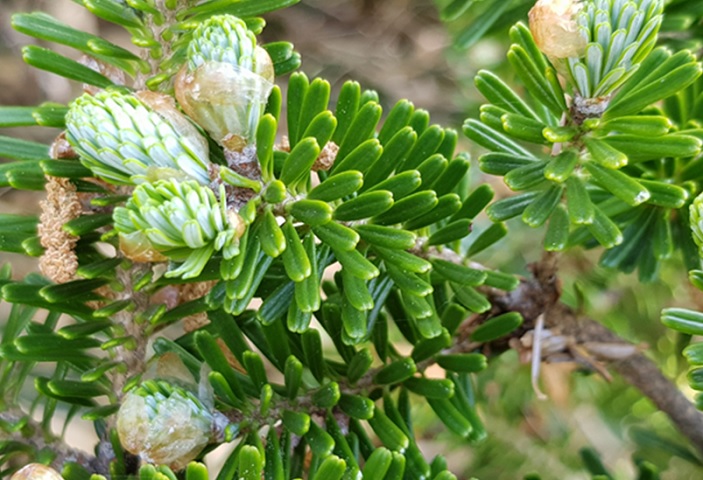SEOUL, Sept. 5 (Korea Bizwire) — A groundbreaking microbial approach has been devised to rescue the Korean fir, a species indigenous to Korea that is teetering on the brink of extinction due to the effects of climate change.
Remarkably, this tree, which ranks as one of the world’s most expensive Christmas trees, remains relatively unknown to most Koreans, as it thrives exclusively on the Korean Peninsula, notably at higher altitudes on mountains such as Mount Halla, Mount Deogyu, Mount Jiri and Mount Gaya.
In the Korean language, the tree is referred to as ‘gusang namu’. This name is derived from the Jeju Island dialect, combining ‘kusal,’ meaning sea urchin, and ‘nang,’ meaning tree.
Initially christened as ‘kusalnang’ due to its leaves’ resemblance to sea urchin spines, it underwent a transcription in the 1930s during the process of standardizing plant names on the Korean Peninsula and became known as ‘gu sangnamo’ or the Korean fir.
Presently, the Smithsonian Institution in the United States holds both the reference standard and the patent for the improved Korean fir.
In comparison to the conventional spruce tree, commonly used as a Christmas tree, the Korean fir is shorter, rendering it ideal for indoor decoration.
Its robust branches are well-spaced, facilitating the hanging of ornaments, making it a beloved Christmas tree choice in the United States and Europe.
Nonetheless, the Korean fir faces a perilous decline due to a combination of factors such as pests, disruptions in pollination, and competition from other trees, all exacerbated by the effects of climate change.
It has been classified as ‘Critically Endangered’ (EN) on the International Union for Conservation of Nature (IUCN) Red List and is recognized as an ‘Observed Species’ in South Korea, indicating its status as a candidate for endangered wildlife protection.
The National Institute of Biological Resources, which operates under the Ministry of Environment, announced in March that it has confirmed the presence of ectomycorrhizal fungi from the genera Beauveria, Clavulina, and Tomentella, which engage in a symbiotic relationship with the roots of sphagnum trees, aiding in their growth.
While these ectomycorrhizal fungi were seldom found in ailing conifers, they were abundantly present on the surfaces of healthy conifer roots and within the adjacent soil.
Ectomycorrhizae subsist on carbohydrates rather than nutrients and water from the soil, acting as protective root extensions that envelop the root surface while also serving as reservoirs for carbon dioxide.
The institute intends to pursue further research to ascertain the optimal conditions for cultivating ectomycorrhizal fungi.
This may involve direct injection of ectomycorrhizal fungi into the roots of sphagnum trees or dispersing them in the surrounding soil to stave off the demise of these valuable trees.
M. H. Lee (mhlee@koreabizwire.com)







